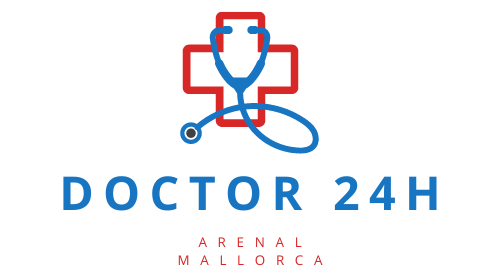Asthma is a chronic respiratory condition that can escalate into sudden and severe episodes known as asthma attacks. Recognizing the signs of an asthma attack is crucial, as these episodes can be frightening and potentially life-threatening. By understanding the symptoms, causes, and necessary actions to take during an asthma attack, individuals can manage their condition more effectively and seek appropriate care when needed.
What Are the Common Symptoms of an Asthma Attack?
Asthma attacks present a range of symptoms that signal your airways are constricting. These include:
- Shortness of breath: Difficulty catching your breath or feeling out of breath.
- Wheezing: A high-pitched whistling sound while breathing, especially upon exhale.
- Chest tightness: A feeling of pressure or squeezing in the chest.
- Coughing: Persistent coughing that may worsen at night or in the early morning.
These symptoms can vary in severity and may escalate rapidly, underlining the importance of an asthma action plan.
What Are the Causes of Asthma Attacks?
Asthma attacks can be triggered by various factors, commonly referred to as asthma attack triggers. These may include:
- Allergens such as pollen, dust mites, or pet dander.
- Respiratory infections like the common cold or influenza.
- Physical exertion or exercise, especially in cold, dry air.
- Exposure to irritants like tobacco smoke, pollution, or strong odors.
- Emotional stress and anxiety, which can lead to hyperventilation.
Identifying personal triggers is a critical step in managing asthma and preventing attacks.
How Can You Recognize a Silent Asthma Attack?
A silent asthma attack may not present the classic symptoms like wheezing or coughing. Instead, look for:
- Increased difficulty in breathing, despite the absence of audible wheezing.
- Lack of response to usual relief medications, such as quick-acting inhalers.
- Worsening peak flow readings, if you use a peak flow meter to monitor your asthma.
Understanding the subtler signs of an asthma attack is crucial for seeking timely help.
What Should You Do During an Asthma Attack?
During an attack, take immediate action:
- Remain calm and try to relax your breathing.
- Use your quick-relief inhaler as directed in your asthma action plan.
- Sit upright, which can help open the airways more than lying down.
- If symptoms persist after initial treatment, repeat inhaler use as specified by your healthcare provider.
- Monitor your symptoms and seek emergency assistance if they worsen.
Following these steps can help stabilize your condition until you receive medical attention.
When Should You Seek Emergency Help for an Asthma Attack?
Seek emergency care if:
- Symptoms continue to worsen even after using your quick-relief inhaler.
- You experience severe shortness of breath, difficulty speaking, or drowsiness.
- Your peak flow readings are in the red zone of your asthma action plan.
Timely access to emergency care can be life-saving during severe asthma attacks.
How Can You Prevent Asthma Attacks?
To prevent asthma attacks:
- Avoid known triggers whenever possible.
- Follow your personalized asthma management plan, including regular use of control medications.
- Get vaccinated against influenza and pneumonia.
- Maintain regular check-ups with healthcare professionals to monitor and adjust treatment.
- Practice good respiratory hygiene to reduce the risk of infections.
Prevention is a key component of living well with asthma and reducing the frequency and severity of attacks.
Related Questions on Asthma Attacks
How Long Does an Asthma Attack Last Without an Inhaler?
The duration of an asthma attack can vary greatly. Without an inhaler, an attack may last from several minutes to hours. However, without treatment, symptoms can escalate rapidly and may become life-threatening. It is vital to always have a quick-relief inhaler available and to know how to use it effectively.
Remember, prolonged asthma attacks require immediate medical attention. If you’re without your inhaler and experiencing an attack, seek emergency help at once.
When Should You Go to the Hospital for Asthma?
You should go to the hospital if:
- Symptoms rapidly intensify and are unresponsive to your inhaler.
- You’re experiencing severe breathlessness or difficulty speaking.
- Your lips or fingernails turn blue, indicating oxygen deprivation.
These signs indicate a severe asthma attack that needs urgent medical treatment.
How Do I Know if I’m Having an Asthma Attack?
You might be having an asthma attack if you notice:
- An abrupt increase in shortness of breath or wheezing.
- Little to no relief after using your quick-relief inhaler.
- Significant chest tightness or persistent coughing.
Recognizing these symptoms early allows for prompt treatment and management.
How to Deal with an Asthma Attack Without an Inhaler?
If you find yourself without an inhaler during an attack:
- Stay calm and try to take slow, steady breaths.
- Sit upright and loosen any tight clothing.
- Try to get to a source of warm, humidified air, such as a shower.
- Call for emergency assistance if symptoms do not improve.
Preparation and awareness are key; always carry your inhaler and have an asthma action plan in place.
Here’s a video that further explains what happens during an asthma attack and how to manage it:
For anyone experiencing regular breathing difficulties or looking to refine their asthma management strategies, we recommend contacting Doctor 24 Hours Arenal Mallorca for professional guidance and support.

